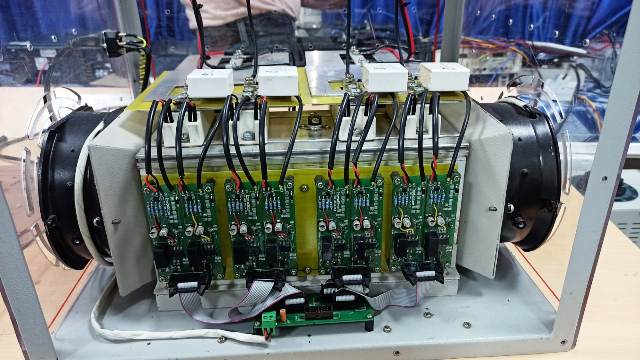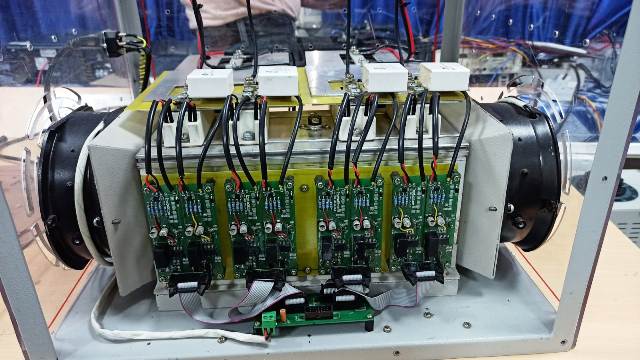A bidirectional DC-DC converter called
a dual active bridge (DAB) has identical full bridges on the primary and
secondary sides, a high frequency transformer, an energy transfer inductor, and
DC-link capacitors. The term "energy transfer inductance" in the
model refers to both the transformer's leakage inductance and any required
external energy transfer inductance.
Both full-bridges' two legs are driven
by complementary square-wave pulses. By employing phase shift modulation to
phase-shift the pulses of one bridge with respect to the other, power flow in
the dual active bridge can be controlled. In order for the leading bridge to
supply power to the lagging bridge, the control directs power between the two
DC buses. The energy transfer inductance's stored energy is directed by the
voltage differential produced across it by the square waves that are delivered
to the bridges.
In ideal cases with dual active bridge converters,
zero voltage switching (ZVS) can be realized when the voltage transfer ratio
(M) across the transformer is equal to 1:
M = Vout / (n*Vin)
where, n is the transformer turn ratio, Vout is
the output voltage and Vin is the input voltage.
In non-ideal cases, ZVS depends on the resonant
relationship between the output capacitance across each device and the
equivalent inductance of the circuit during different switching intervals.
During switching events, the current through one of the complimentary devices
is interrupted, but due to the energy transfer inductance, current is supplied
through the output capacitor and forced through the anti-parallel diode of the
device.

Each switch is on for 50% of its respective
switching period. The switch pairs in the two bridges all have the same
switching period but are operated such that between each bridge a phase shift
is introduced that varies based on the modulation derived from feedback
measurements. An output voltage error signal is generated based on a set point
value and this is fed through a digital PI regulator to generate the phase
shift ratio for the PWM modulator.


